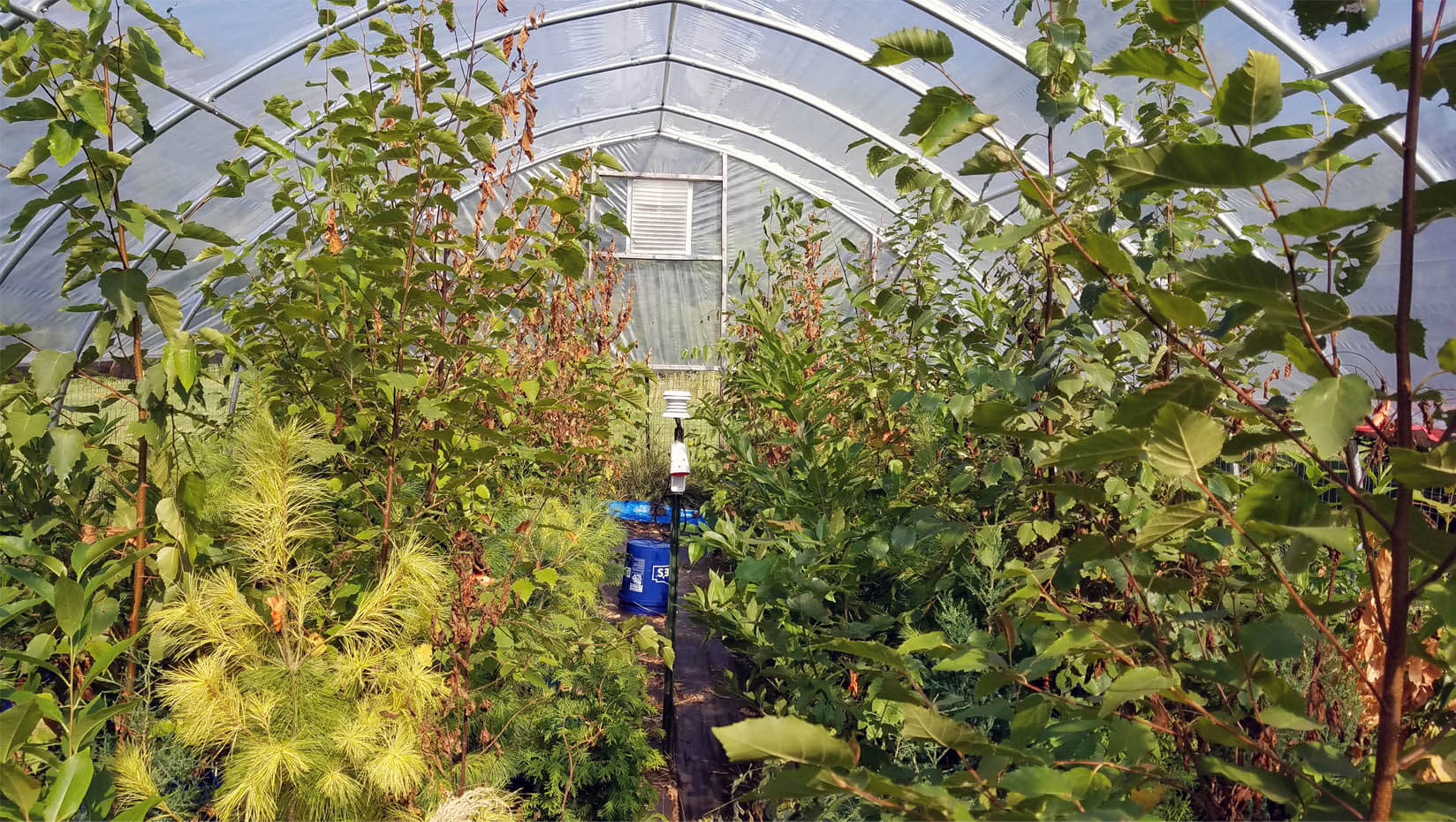
Study finds trees vary in their recovery from drought stress, with implications for future forests
With over 4 feet of annual precipitation in the Northeast United States, drought is not often considered a major factor affecting the region’s forests. But warming temperatures cause forests to dry out quicker between rains. Seedlings are especially vulnerable because their nascent root systems can’t access moisture deeper in the soil, according to a University of Maine-led study.
The timing of drought also affects which tree species are more vulnerable, according to the findings of the study, published in the journal Annals of Botany PLANTS.
UMaine and Schoodic Institute scientists assessed the sensitivity of six tree species — red maple, paper birch, black cherry, eastern red cedar, eastern white pine, and northern white cedar — to drought occurring at different times during the growing season. A subset of the seedlings received either a spring, summer or early fall “drought” of six weeks, during which those particular plants did not get watered.
The experiment was conducted in a greenhouse to simulate future temperatures and control the amount of water each tree seedling received.
The study lead, UMaine graduate student Ruth van Kampen, tracked the height and diameter of each of the 288 seedlings throughout the growing season.
“Thanks to the thousands of measurements on the tree seedlings by Ruth, we’re able to look at how tree growth recovers from drought within the same year,” says Jay Wason, UMaine assistant professor of forest ecosystem physiology and journal article co-author.
The research showed that some growth strategies, such as concentrated growth in the spring months for eastern white pine and paper birch, make these trees very sensitive to early drought. Other species, like northern white cedar, showed resilience to drought through increased growth later in the season.
“Species respond individually to climate change stress, such as drought,” says study co-author Nicholas Fisichelli of Schoodic Institute at Acadia National Park. “This research helps us understand which species will be impacted depending on when droughts occur.”
Contact: Margaret Nagle, nagle@maine.edu
